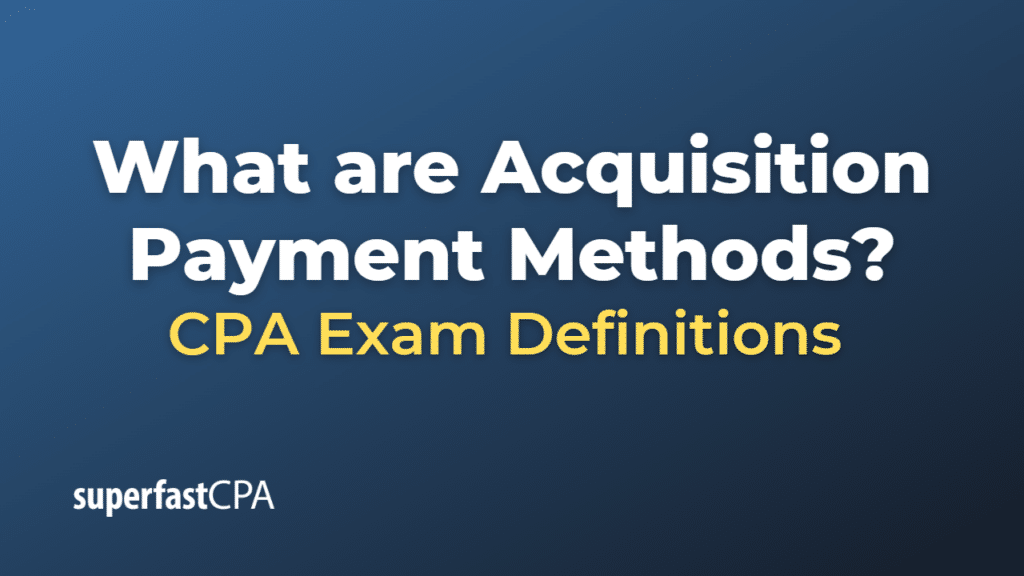Acquisition Payment Methods
Acquisition payment methods refer to the various ways in which an acquirer (the company purchasing another company) can pay for the target company (the company being acquired). The main acquisition payment methods are:
- Cash payment: The acquirer pays the purchase price of the target company entirely in cash. This method is usually preferred by the target company’s shareholders, as it provides immediate liquidity and certainty of value.
- Stock-for-stock (Equity) payment: The acquirer issues its own stock to the target company’s shareholders as payment for the acquisition. In this method, the target company’s shareholders receive a specified number of shares in the acquiring company for each share they own in the target company. This method allows the target company’s shareholders to participate in the combined company’s future growth and earnings.
- Combination of cash and stock: The acquirer pays for the target company using a mix of cash and its own stock. This method provides the target company’s shareholders with both immediate liquidity from the cash portion and potential for future growth from the stock portion.
- Debt financing: The acquirer borrows funds to finance the acquisition, typically through bank loans or by issuing debt securities such as bonds. This method increases the acquirer’s financial leverage and can provide tax advantages, but it also adds financial risk due to the additional debt.
- Asset swaps: In some cases, the acquirer and target company may agree to exchange specific assets, such as business units, intellectual property, or real estate, instead of cash or stock. This method can help both parties achieve their strategic goals without a direct financial transaction.
- Earnouts: An earnout is a contingent payment based on the future performance of the target company. The acquirer agrees to pay the target company’s shareholders additional consideration if the target company achieves certain financial or operational milestones after the acquisition.
The choice of payment method depends on factors such as the acquirer’s financial resources, the target company’s preferences, the perceived risk of the transaction, and the strategic objectives of both parties.
Example of Acquisition Payment Methods
Let’s consider a hypothetical example of an acquisition with a combination of cash and stock payment methods.
Suppose Company A wants to acquire Company B. After negotiations, they agree on a purchase price of $100 million. Company A decides to use a combination of cash and stock to finance the acquisition.
The agreed-upon payment structure is as follows:
- Cash payment: Company A will pay $60 million in cash to Company B’s shareholders.
- Stock payment: Company A will issue 1 million shares of its own stock to Company B’s shareholders.
For the stock payment, let’s assume that Company A’s stock is currently trading at $40 per share. The stock portion of the acquisition would be valued at $40 million (1 million shares x $40 per share).
In this example, Company B’s shareholders receive a total consideration of $100 million, consisting of $60 million in cash and $40 million in Company A’s stock. This allows the shareholders of Company B to receive immediate liquidity from the cash portion while also giving them the opportunity to participate in the future growth and earnings of the combined company through the stock portion.













